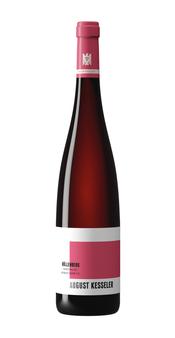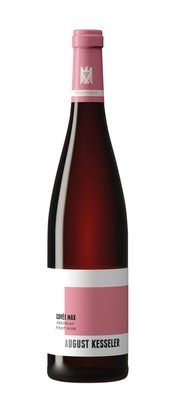If the current state of the world has you filled with foreboding, you could chalk up the arrival of fabulous Pinot Noir from Germany to global warming. Or, if you’re trying to be upbeat about things, you could attribute this happy surprise to German craftsmanship. If you’re feeling even-handed, you could credit both, which probably makes sense. But in any case, though few American wine lovers have yet to experience the wines directly, Pinot Noirs from Germany have arrived at a point quite near the peak of the global quality pyramid.
I’ve been enjoying some of the better examples for about a decade at this point, and also taking devilish pleasure in inserting them in blind tasting classes at Capital Wine School as well as private tastings for law firms and other clients around my home in D.C. Pinots from the likes of Meyer-Näkel routinely mop the floor with top Premier Cru Burgundies when tasted sight-unseen, which is fun to witness in its own right, but not quite as fun as seeing big-shot lawyers glaze over in amazement when the wines are revealed after a vote.
I’ve hesitated to write much about this phenomenon for the good reason that very few bottles make it to the USA. However, after tasting through a set of  four standout current releases from a major national importer, Vineyard Brands, I’ve finally broken down.
four standout current releases from a major national importer, Vineyard Brands, I’ve finally broken down.
The mind-blowing leader of this four-pack is August Kesseler (Rheingau, Germany) Assmannshäusen Höllenberg GG Pinot Noir 2016, with a suggested price of $203 and 97 Points in my carefully considered assessment. This is one of the most remarkable renditions of Pinot Noir that I’ve tasted over the past five years, and just for context, that span would include tastings of well over 1,000 bottles made from that variety.
Beyond being striking for a German Pinot, it embodies a couple of characteristics that make it a sort of archetype for Pinot per se…alongside the likes of Musigny or La Tache from Burgundy (stop laughing…I’m serious). First, it almost perfectly exemplifies an uncanny combination of “flavor without weight,” an attribute that transcends even the descriptors “delicacy” or “elegance” that are often attached to Pinot. My friend and WRO colleague Michael Apstein and I employ this tasting term occasionally after one of us coined it while we were enjoying dinner together at Ferran Adrià’s legendary restaurant “El Bulli” in Catalonia—the place that made “culinary foam” famous (and infamous). If the term doesn’t seem to make sense to you in relation to wine, it definitely will after you taste this bottle.
Second, when evaluating young wines—especially Riesling and Pinot Noir—I place very high value on “purity” of fruit. This does not refer to a wine that is “simple,” showing fruit and nothing else, but rather to a pure core of fruit flavor in a wine that enables other accent notes to display themselves against a perfectly un-tainted background. This wine is an object lesson in purity, showing ripe, red cherry flavors that are as impeccable as they are alluring. Subtle accents of spices and some nascent savory undertones are also evident, but everything speaks softly in this wine, including the wood and tannins.
No doubt the growing site had a major role in the wine’s sophistication, as the very steep, slate-strewn Assmannshäusen Höllenberg vineyard and its very old vines is a renowned site for Pinot, a variety that comprises fully 40% of Kesseler’s production (which may be surprising for the majority of wine lovers who think of the Rheingau almost exclusively as a source for Riesling).
With the vineyard’s excellence noted, excellent cellar work is also evident, both in what the wine shows and what it doesn’t show. Regarding the utter absence of any astringency from stem or seed tannins, it seems that this wine results from the lightest possible pressing, or that the juice for this particular bottling wasn’t pressed at all, as opposed to being made just from the free-run juice freed by the weight of the grapes themselves in a recaption bin. Based on the wine’s “feel,” I’d guess that–if it was pressed at all—it was by butterflies who had inhaled helium. Phenomenally sleek and graceful, this is quintessentially “feminine” Pinot, and I only wish I had another bottle to see how it will age as tertiary notes from time in bottle add complexities to this almost ethereal wine.
Obviously a price tag of $203 is going to scare off a lot of wine lovers, even those who are open to the idea that German Pinot deserves mention alongside  the elite from Burgundy. So, next in line from Kesseler is the 2015 “Cuvée Max,” $120 and scored at 93 Points. This is a bigger, riper, more structured wine with more oak and grip. I’m certain that some tasters who value flavor impact above delicacy will actually prefer this bottling to the Assmannshäusen Höllenberg 2016, so if you fit that description, go for this if you’re lucky enough to find a bottle.
the elite from Burgundy. So, next in line from Kesseler is the 2015 “Cuvée Max,” $120 and scored at 93 Points. This is a bigger, riper, more structured wine with more oak and grip. I’m certain that some tasters who value flavor impact above delicacy will actually prefer this bottling to the Assmannshäusen Höllenberg 2016, so if you fit that description, go for this if you’re lucky enough to find a bottle.
The best value in the lineup is the straight 2014 Pinot Noir, with suggested pricing at $61 and earning a score from me of 93 Points. The fruit is assembled from steel sites in the villages of Lorch, Assmannshäusen and Rüdesheim, and it shows wonderful purity and freshness and a very high ratio of flavor to weight. I really recommend decanting this wine and giving it plenty of air by swirling one’s glass, which enables a host of little complexities to emerge over the course of a couple of hours…provided you can muster the patience to keep from polishing it off sooner than that.
The entry-level offering in the Kesseler Pinot lineup is called “The Daily August” 2017, priced at $27 and scoring a solid 90 Points. It is significantly “juicier” and more overt in its charms that its stablemates, but still, there’s no mistaking this for the sort of Pinot/Syrah juice that is increasingly common from California (which can be delicious…to be fair…but is definitely not made by butterflies buzzed on helium). Fruity and fun but still with impressive sophistication, this is a relatively affordable way to get a sense of Germany’s emerging Pinot prowess….
1
